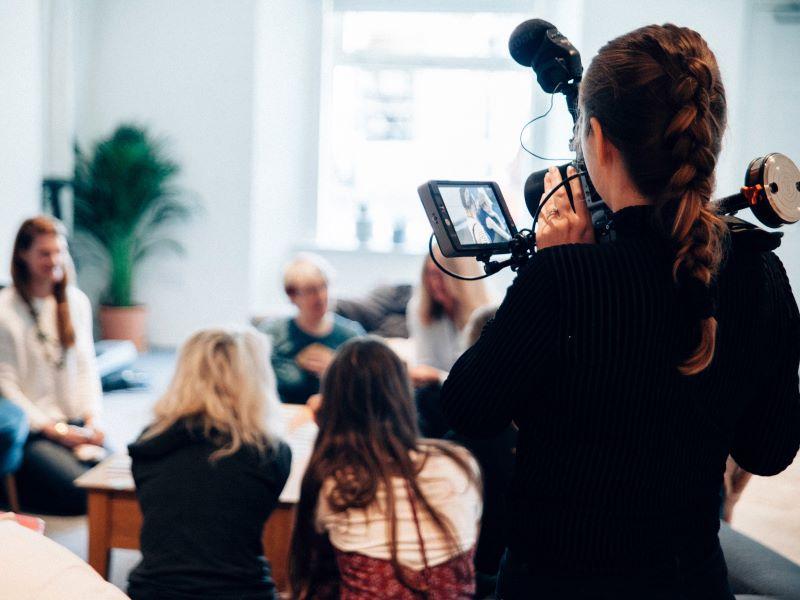The concept of the “learning community” has been catapulted into the limelight. Within a learning community, learners work collaboratively, in partnership with their teachers, towards the course outcomes. This social cohesion ensures that all members of the community contribute towards learning, reducing teacher workload and enhancing students’ learning experience. Social presence is focused on members being present authentically and affectively. We must support and scaffold learners to be confident in their contributions to the learning community.
However, the task of developing a high-quality learning community often feels like a challenge, especially when you consider the number of factors that can affect your learners’ ability to actively collaborate and be part of your community. For example, students may be overwhelmed by the workload of their course or suffer anxiety around socialising. Others may have external commitments such as work or caring responsibilities that cause them to take a transactional approach to their classes (that is, go in, do the work, get out).
- Promoting community and inclusiveness to diverse and dispersed students
- Building community in the classroom whatever your teaching modality
- Blocks for building a stronger student community
With new and imaginative ways for higher education institutions to collect feedback from learners, the point that we need to do better is made ever clearer. So, we have worked with academics, learners and professional staff to build a database of practical tips for teaching staff. All stakeholders have assessed every suggestion as valid and practicable.
Over three articles, we will offer the best suggestions for improving your practice in line with the three presences of a learning community, as laid out by Garrison’s Community of Inquiry framework.
This resource focuses on helping you achieve greater social presence within your community.
Develop a social presence among your students
We must turn our classrooms and lecture theatres into social spaces to ensure our learners benefit from the diversity and experiences of their peers. The best advice we have to achieve this is to “embed social interactions into your teaching sessions from day one”.
Think, pair, share is an excellent activity for this. Don’t overthink the topic; learners can do this for anything. For example, they can consider questions such as: what are you most excited about learning on the course? What are your thoughts on the timetable? They could generate questions around where to find financial, well-being or housing support.
Whatever the topic, and whatever the size of your class, adding two or three of these exercises into your first three sessions will help your learners get comfortable talking to each other. This will build their confidence around working with each other, which will gradually form a great foundation for group work.
To support learners in group work, offer them ample time to find someone who they could study with and guide them in how to find a good partner. For example, create a discussion board (the platform doesn’t matter) where they can post their preferred working methods and find like-minded peers to partner up with.
Adopting these methods requires minimal development or class time but will have a positive impact on the social cohesion of your classes.
Extend your community beyond the classroom
A learning community does not exist only during designated classes. Luckily, there are digital tools to help you and your learners engage with the community anywhere, at any time. However, all too often discussion boards and online social spaces sit quiet and unused. Here is our top tip to ensure an active online community: “Demonstrate that you are actively engaged with online discussions and tasks.”
Authenticity goes a long way with learners, as does empathy towards easing the awkwardness of being the first to contribute to an online discussion. So, start with low-stakes, opinion-based discussions around a news story or topical research. Then, be the first to offer a view and be open to responses that support or conflict with your statement (if their case is based on evidence). Be sure that you, or another member of staff, react with at least an emoji or like to every comment so everyone feels valued.
The concept of a “digital native” has been debunked and students require support as they develop their social norms for engaging with the community online. As such, you should take the time in class to outline expectations for the online community. Explain and demonstrate what good practice is and outline the benefits they can expect to gain from taking part.
If you create discussion boards with different purposes, make those clear to students. For example, you may start with an informal discussion board, then later in the course, open one that is more formal. Learners will get more from the new discussion board if you are clear about the expectations.
Effective online communities will have learners answering each other’s questions and supporting their skills development through the course. So, taking the time to create these authentic spaces will pay dividends later on.
Foster a strong social presence among your students
Developing and fostering a strong social presence in your courses will ensure learners actively participate in your classes and are primed for group work or group assessments. It will also encourage learners to cognitively engage with your course outside class and take the emphasis away from you as the fount of all knowledge.
So, build authentic social interactions into all your sessions, especially your first session, with low-stakes topical discussions. Then provide opportunities for online participation that offer a nurturing, supportive and fun element to the community.
Hannah Shaw is a reader in anatomy and Mike Hackman is a learning designer, both at Cardiff University.
If you would like advice and insight from academics and university staff delivered direct to your inbox each week, sign up for the Campus newsletter.




comment